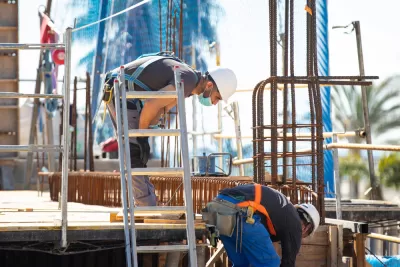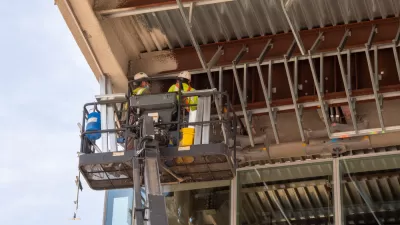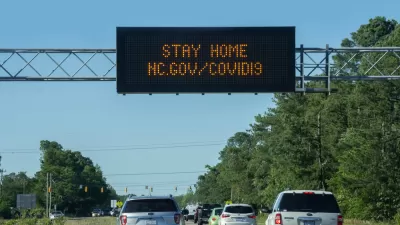The changes coming to the construction industry to protect the safety and health of workers during the pandemic could stay in place for the foreseeable future.

When the pandemic first hit, two approaches to construction work emerged. In one kind of place, most notably Boston, construction work was suspended indefinitely. Other places, like California, included construction work in the category of essential, and even accelerated project timelines with fewer cars on the road. For the first two months of the public health crisis, the construction industry lacked clear direction on the requirements of a safe and healthy construction site. Now, however, more companies are moving forward construction with strict regulations enforced by state and local authorities, and the requirements of safe construction in the time of COVID-19 are beginning to emerge. These new regulatory standards could end up sticking around as the new normal for the industry for the foreseeable future, or they could end up requiring a complete overhaul in the near term if workers begin to encounter the kind of outcomes currently ravaging workers in other sectors of the economy.
Jenn Goodman writes to provide some details on what the future of the construction industry will look like during and after the public health crisis, as the industry plans for long-term changes. "This emphasis on cleaner, less crowded work areas is one that won’t recede after the virus does," writes Goodman.
"The new normal will be reinforced by state, local and federal regulations, such as the ones recently proposed in Washington and Pennsylvania, and in the near future, OSHA could require employers to develop written infectious disease preparedness and response plans, said attorney Michael Rubin, chair of Goldberg Segalla’s national OSHA and Worksite Safety practice group," adds Goodman.
Other predictions included in the article about the new normal in the construction industry: remote work and teleworking will be much more common, and many projects are likely to take longer.
For additional reporting on the public health concerns that linger as construction sites begin to reopen, see also articles by Jonathan Hilburg and Mathew Haag that focus especially on the resumption of construction work in New York City.
FULL STORY: The new normal: 8 ways the coronavirus crisis is changing construction

Study: Maui’s Plan to Convert Vacation Rentals to Long-Term Housing Could Cause Nearly $1 Billion Economic Loss
The plan would reduce visitor accommodation by 25,% resulting in 1,900 jobs lost.

Alabama: Trump Terminates Settlements for Black Communities Harmed By Raw Sewage
Trump deemed the landmark civil rights agreement “illegal DEI and environmental justice policy.”

Why Should We Subsidize Public Transportation?
Many public transit agencies face financial stress due to rising costs, declining fare revenue, and declining subsidies. Transit advocates must provide a strong business case for increasing public transit funding.

Paris Bike Boom Leads to Steep Drop in Air Pollution
The French city’s air quality has improved dramatically in the past 20 years, coinciding with a growth in cycling.

Why Housing Costs More to Build in California Than in Texas
Hard costs like labor and materials combined with ‘soft’ costs such as permitting make building in the San Francisco Bay Area almost three times as costly as in Texas cities.

San Diego County Sees a Rise in Urban Coyotes
San Diego County experiences a rise in urban coyotes, as sightings become prevalent throughout its urban neighbourhoods and surrounding areas.
Urban Design for Planners 1: Software Tools
This six-course series explores essential urban design concepts using open source software and equips planners with the tools they need to participate fully in the urban design process.
Planning for Universal Design
Learn the tools for implementing Universal Design in planning regulations.
Smith Gee Studio
Alamo Area Metropolitan Planning Organization
City of Santa Clarita
Institute for Housing and Urban Development Studies (IHS)
City of Grandview
Harvard GSD Executive Education
Toledo-Lucas County Plan Commissions
Salt Lake City
NYU Wagner Graduate School of Public Service





























